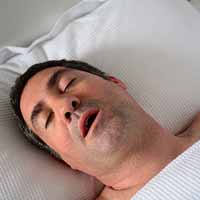

20
Mar
Far beyond cleaning and fillings: Glen Allen, VA dentist discusses airway dental treatments

When you think of dentistry, images of teeth cleaning and cavity filling probably come to mind. Those are fundamentals of dentistry that most people have experienced. Yet tremendous advances have been made in the field. As a biological dentist with a deep understanding of the mouth-body connection, Dr. Olivia Hart is well-qualified to treat a variety of conditions, including airway disorders, with dental treatments. Here she answers some of the questions patients in the Glen Allen, VA area have about this topic.
Why do we breathe?
Humans breathe in to send oxygen to cells. They need oxygen to generate energy to perform their specific tasks. Cells create energy by breaking down glucose. Carbon dioxide is a waste product of that process, expelled when you breathe out.
A fully-functional respiratory system consists of:
- Nasal passages.
- Oral cavity.
- Pharynx, larynx, and trachea.
- Bronchi and bronchioles.
- Lungs.
- Diaphragm.
A healthy gas exchange involves oxygen-rich air entering the lungs. The airway is the path that it takes to reach the lungs. As you can see, that encompasses all but the last component of the above list. The lungs move oxygen into the blood stream so that it may be carried to all parts of the body. Red blood cells gather carbon dioxide and transport it back to the lungs for exhalation.
What can go wrong?
Adults generally take 12 to 20 breaths per minute as an involuntary and unconscious action. Respiration rate naturally drops during sleep when fewer demands are placed on the body and accelerates during strenuous activity.
While a variety of problems can occur in the respiratory system, airway dentistry focuses on obstructions in the inward and outward flow of air, from nasal passages to oral cavity and throat. The airway can become obstructed by abnormal oral development, cysts or tumors, or changes to soft or hard tissues caused by trauma. However, obstructive sleep apnea is a frequent cause of sleep-disordered breathing.
REQUEST AN APPOINTMENT
What is sleep apnea?
Sleep apnea describes interruption in breathing during sleep. Central sleep apnea is the result of faulty signals from the brain that trigger muscles to perform breathing processes. Obstructive sleep apnea or OSA is much more common and is often characterized by loud, chronic snoring. It is a blockage or partial obstruction of the airway caused by the collapse of soft tissues at the back of the throat during sleep. OSA is a serious medical condition with health impacts ranging from headaches and migraines to obesity, depression, and increased risk of heart attack and stroke. OSA in children impacts behavior, school and athletic performance, and concentration.
What is airway dentistry?
Airway dentistry focuses on identifying breathing-disturbed sleep. The dentist evaluates “choke points” where respiration becomes impaired, so that they may be improved through dental treatment or integrated care with other medical professionals. Airway dentistry treats but is not limited to, OSA. Sleep is simply the time when airway disordered breathing is most obvious because there is no conscious effort to improve airflow.
Once OSA is diagnosed and severity-rated by a physician, Dr. Hart’s experience can be tremendously helpful in improving breathing by addressing underlying causes. For example, she assesses dental wear for signs of malocclusion – bites problems or inefficiencies in how the upper and lower arches of teeth come together. She also evaluates TMJ problems and craniofacial development.
Why is nasal breathing important?
One of the goals of airway dentistry is to enhance your ability to breathe through your nose – both in and out. The nose is lined with tiny hairs that filter impurities and condition air (warming, cooling, and adding moisture) on the way in before it reaches the lungs so that it can be processed more efficiently. You cannot expel air as quickly from smaller nasal passages compared to the windpipe and mouth. That gives lungs extra time to extract oxygen before carbon dioxide is expelled.

Benefits of nasal breathing include:
- Increased energy level.
- Reduced toxins in the body.
- Potential improvement in insomnia and blood pressure.
- Aids in maintaining balanced pH in blood.
- Stimulates sinuses to produce nitric oxide that fights viruses and harmful bacteria, boosting the immune system.
- Improves hypothalamus function – the part of the brain that controls heartbeat, blood pressure, appetite, sleep cycles, memory, and emotional state.
For care that goes far beyond fixing teeth, including airway dental treatments, call Virginia Biological Dentistry in Glen Allen, VA at (804) 381-6238










